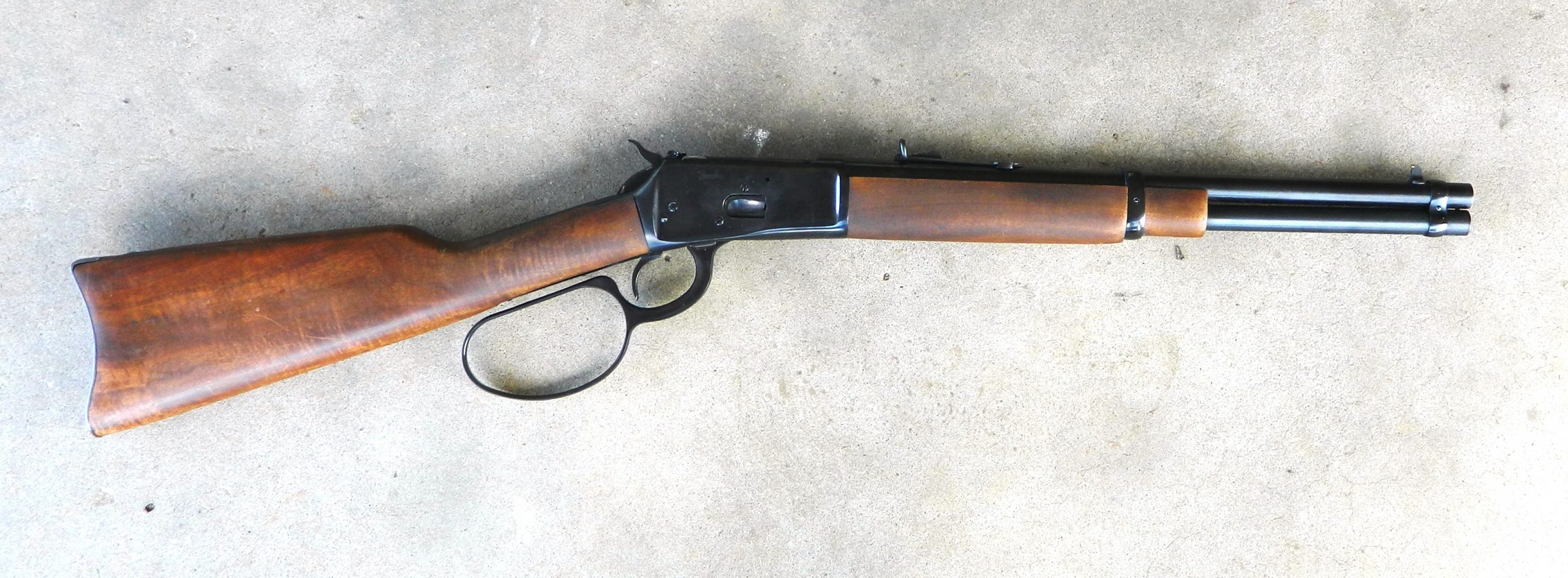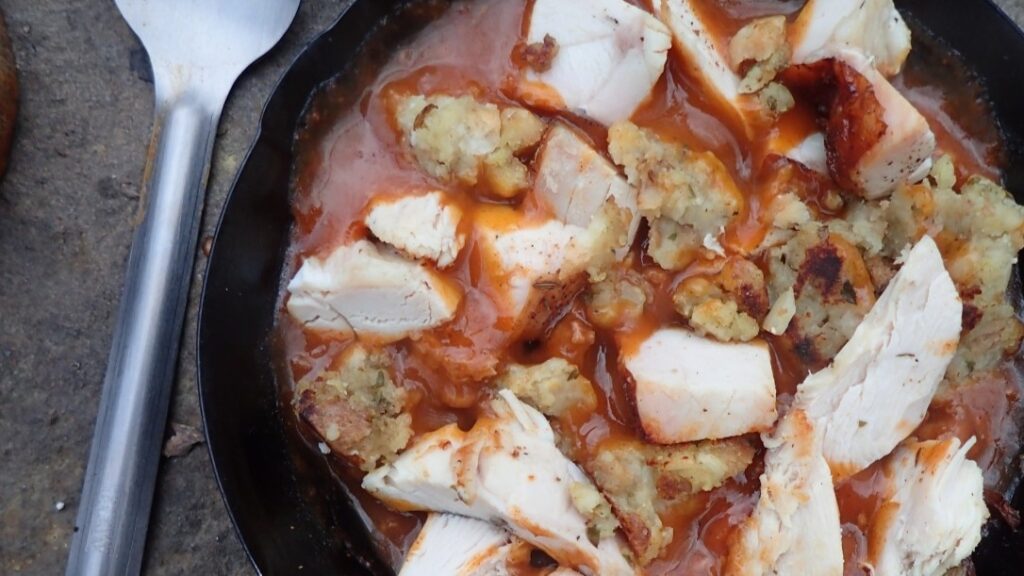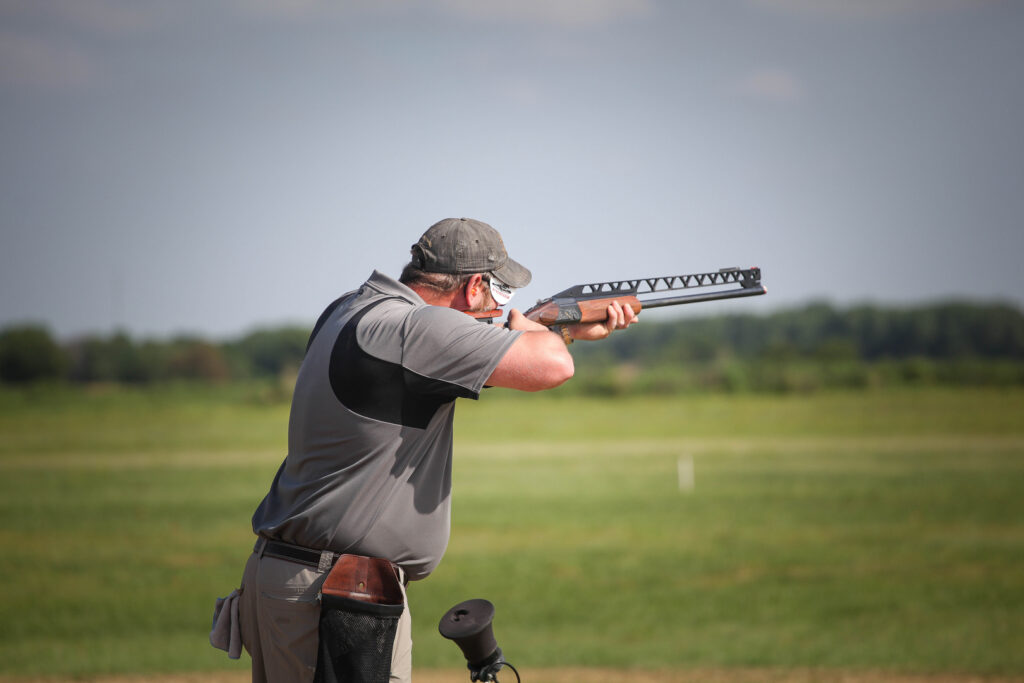The title is a bit tongue in cheek – but these short, handy, fast handling rifles have earned this nickname. It is affectionately given to a friendly straight shooting rifle. I have kept a lever action rifle handy for all around use for most of my life.
As a peace officer, the Winchester Model 94 .30-30 WCF lever action rifle rode in the trunk on more than one occasion. Such a rifle is capable of solving most of the problems encountered. I have seen many lever actions in the hands of outdoorsmen and the rifles were beaten, battered, and even muddy. These things happen after a decade or two of use. But the rifles always work. When the likely profile is that you may need only a shot or two but that the rifle needs to come up shooting every time and hit hard, a powerful lever action rifle is a viable choice.
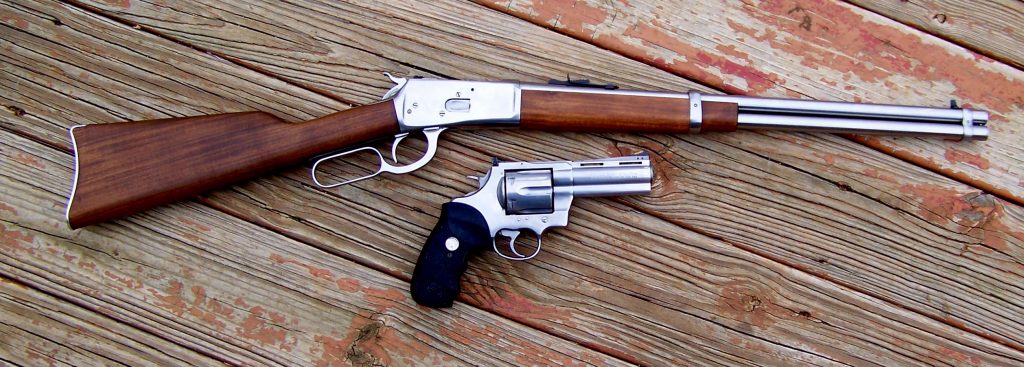
Advertisement — Continue Reading Below
A lever action rifle handling a pistol cartridge makes sense. It is less difficult to find a range that allows pistol caliber carbines and this is a real consideration in many areas. Also, I am an enthusiastic handloader. As long as the brass holds out and I am able to obtain lead, primers and powder I will be shooting. I don’t hoard ammunition; I simply keep a reasonable supply. Primer supply is easing up a little. I don’t carry the same caliber handgun and lever action rifle, however, as the handgun and rifle are for different chores.
It is a neat trick for cowboy action shooting sure, or if I were a real cowboy! Ammunition conservation was a real deal in the day, we just play at it now.
The lever action carbine slips behind the seat of a truck easily. It is flat, light, and may be made ready by quickly working the lever action. Once ready it may be made safe by simply lowering the hammer. Accuracy isn’t the long suit of the short pistol caliber carbine but it is accurate enough for most chores to 100 yards. Versatility is the long suit. It is a bonus that a good example isn’t expensive. These rifles are available in .357 Magnum, .44 Magnum, .45 Colt and .454 Casull, and I have seen examples in .44-40 as well.
Advertisement — Continue Reading Below
The .357 is economical and the best choice for Cowboy Action. With Magnum loads it is a fine defense caliber and will do for deer. The .44 Magnum is a great caliber. I have used it to drop large boar hogs and it hits like Thor’s hammer. The .44-40 is a handloading proposition for real power, from a rifle it is in 10mm category.
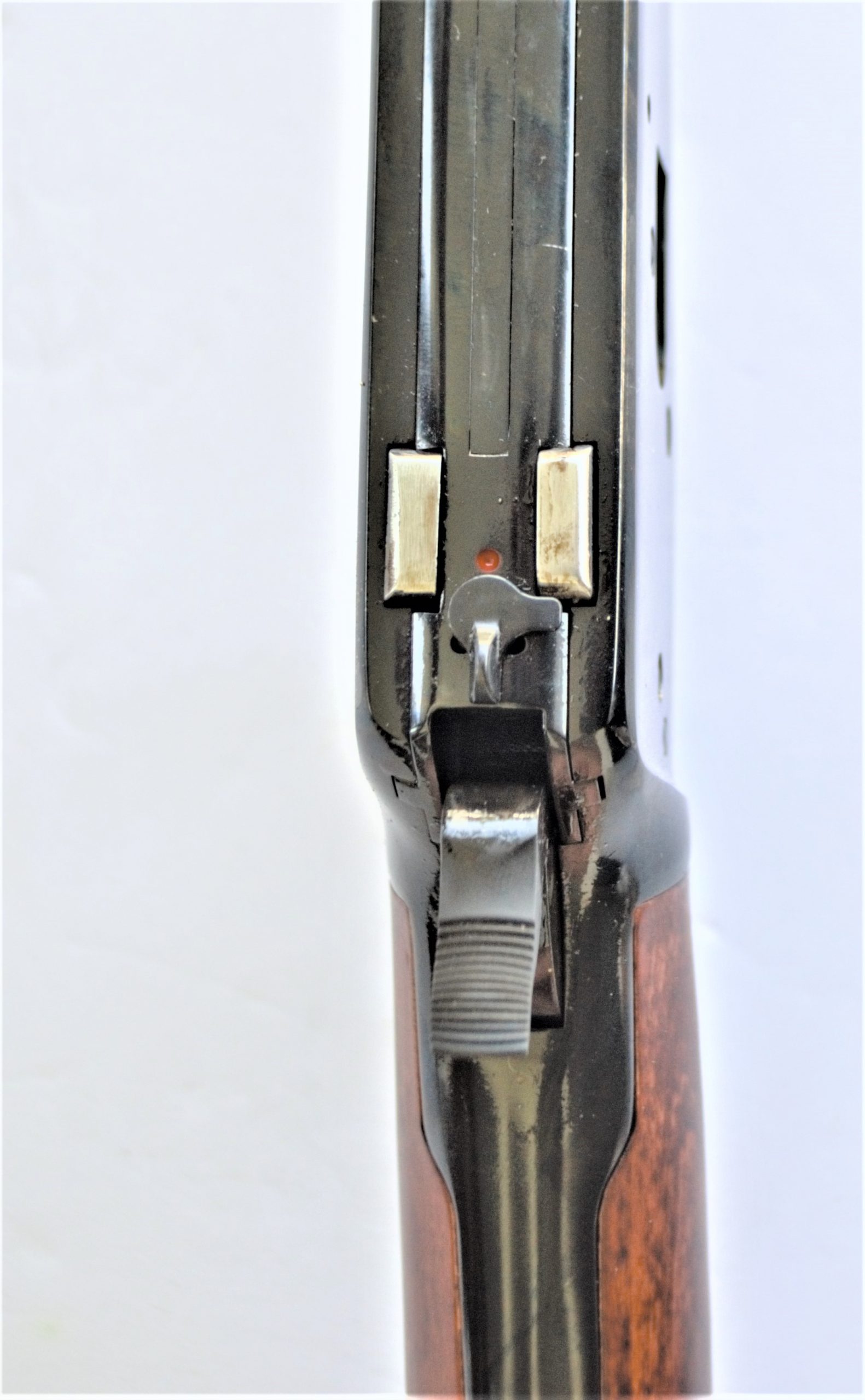

Advertisement — Continue Reading Below
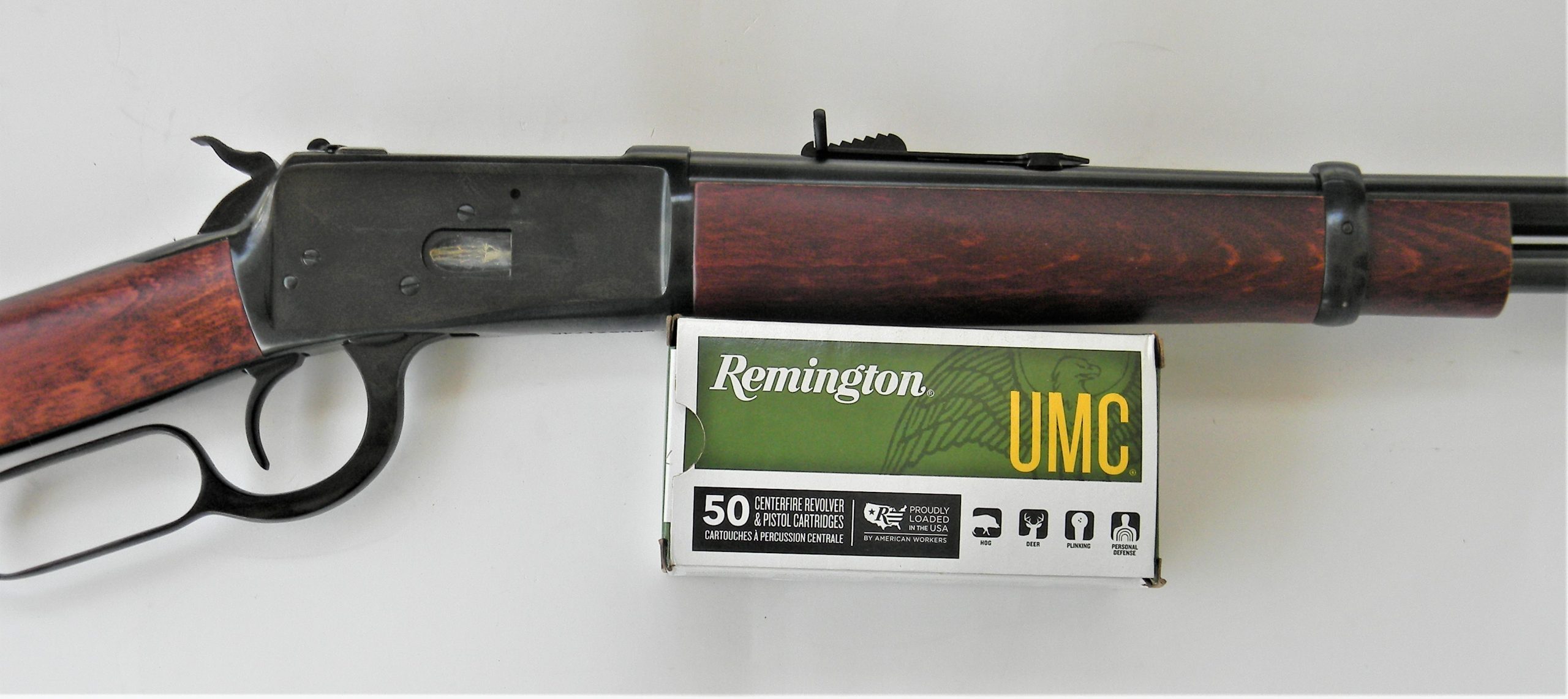
I happened along a .45 Colt example. The rifle looked good, with nice Brazilian wood and the popular large ring lever. Since I had plenty of .45 Colt brass the choice wasn’t difficult. I have reached that pleasant stage in life when every firearm doesn’t have to have a well defined mission to earn its keep, and where a specialized firearm that does a few things well is good to have. The Rossi was destined to serve as a go anywhere do anything rifle. For short range hunting, probably an opportunity rather than a planned hunt, to dispatch predators, pests and dangerous animals, and for personal defense on the road, the Rossi seemed a good fit.
The sights are pretty basic. There is a front post with a small brass bead and an open sight in the rear. The front post is adjustable for windage – with the proper punch – and the rear sight may be adjusted for elevation by use of the sight ladder. You have to know how to use these sights. I have heard more than a little grumbling concerning the difficulty of sighting in similar rifles. The front post must be set in the bottom of the rear notch for the proper point of aim. You do not hold it in the upper part of the rear leaf or you will shoot impossibly high. Use the six o’clock hold as holding dead on may result in the shots going low. A tubular under the barrel magazine holds eight rounds.
Advertisement — Continue Reading Below
The bolt is locked by rear locking wedges. The rifle is unlocked by working the lever. As the lever travels downward, the bolt moves to the rear and the extractor pulls the spent case from the chamber. The fresh round is fed from the magazine into a shell carrier. As the lever is closed the carrier feeds a fresh round into the chamber. Rearward travel of the bolt cocks the hammer.
Be certain you learn to properly use the lever action. The lever is pressed forward, not down, and a certain cadence of fire comes with practice. A pistol caliber carbine, such as the Rossi 92 has more leverage than a .30-30 rifle and the action may be manipulated more quickly.

Advertisement — Continue Reading Below
The Rossi was fired for the most part with my personal handloads using a 255 grain cast SWC. With the .44 Magnum carbine I have had to crimp over the bullet shoulder in order to assure feed reliability – loads intended for use in a revolver sometimes did not feed correctly in the carbine. This wasn’t the case with the .45 Colt carbine.
At 25 yards the handloads struck a bit right and low but this was easily adjusted. In factory ammunition there are several distinct classes of ammunition. These include cowboy action loads that are lighter than standard, standard pressure lead loads, and standard pressure personal defense loads. There are heavy hunting loads such as the ones offered by Buffalo Bore. I fired a representative sample of each class of load.
I fired a quantity of the Winchester 225 gr. PDX JHP defense load and also the Speer 250 gr. Gold Dot JHP load. Each was mild to fire and accurate. The bonded bullets should be excellent for personal defense. I also fired a quantity of the Hornady Critical Defense. This 185 grain bullet struck below the point of aim but gave good feed reliability. It would have been easy to adjust the sights if I wished to deploy this loading. I also fired a small quantity of the Buffalo Bore 225 grain all copper bullet. What struck me is that these loads are practically indistinguishable as far as recoil. Each was mild, with no more recoil than a .410 bore shotgun. Only the Buffalo Bore load was noticeably hotter. But you are getting serious horsepower.
Advertisement — Continue Reading Below
Here are a few velocity figures:
Winchester 225 grain PDX, 1090 fps
Hornady FTX 185 grain Critical Defense, 1180 fps
Advertisement — Continue Reading Below
Buffalo Bore 225 grain Barnes, 1310 fps
A point of contention is the L shaped safety found on the bolt. I simply ignore it. I would not remove it, some may wish to use it. Another source of some discussion was the large loop lever. This large loop is a great addition for use with gloved hands, but otherwise it isn’t more efficient than the standard loop. It may be slower to use than a standard loop.
When the Rossi is taken as a whole it is a capable carbine for many situations. It isn’t particularly accurate but it is accurate enough. It is inexpensive and fires a proven cartridge, with a good reserve of ammunition. If saddle rings and the big lever appeal to you the Rossi has much to recommend. But it is also a good performer and this is an attractive combination. When you look past the cinema depiction of the rifleman you realize that Lucas McCain was pretty smart to deploy a rifle and it gave him an advantage.
Advertisement — Continue Reading Below
Another option: after using the .45 Colt rifle for several years I obtained a more practical version in .357 Magnum. This rifle weighs six pounds and features a 16 inch barrel. The sights are the same as the .45 Colt version. The Magnum gains quite a bit more velocity in a carbine than the .45 Colt. As an example the Federal 125 grain .357 Magnum breaks 1430 fps from a four inch barrel revolver but well over 2100 fps in the Rossi Carbine. The PMC 158 grain JSP isn’t a great revolver load. It breaks just over 1000 fps in a four inch barrel revolver but has plenty of blast. I guess they use a slow burning powder. In the 16 inch barrel Rossi the Armscor load clocks 2122 fps! This is a tremendous increase. I double checked my figures and I was dead on using two chronographs.
On the other hand some loads do not gain as much. The Black Hills 127 grain Honey Badger does about 1390 fps in a four inch barrel revolver. Black Hills probably uses a faster burning powder, powder burn is very clean. The Honey Badger load breaks 1830 fps in the Rossi, a good increase but not as great as some. The .357 Magnum rifle is more accurate than the .45 Colt. It is good to have both- but the .357 is far more economical. I think as a home defender or for deer sized game the .357 beats the .45 Colt overall save at close range where the big chunk of lead in the .45 takes its toll.
And yes comparison to the .30-30 was inevitable. Take what you wish to make of it, the PMC 158 grain load exits the Rossi’s 16 inch barrel at over 2100 fps. In the Marlin 336 a Winchester 150 grain Silvertip breaks 2100 fps the .30-30 WCF Power Point, also by Winchester in .30-30 break 2159 fps. Could the .357 hit harder at close range? Sure it could but the short revolver bullet will not retain energy at longer range as the long slim .30 bullet will. What a fascinating study this has been!
